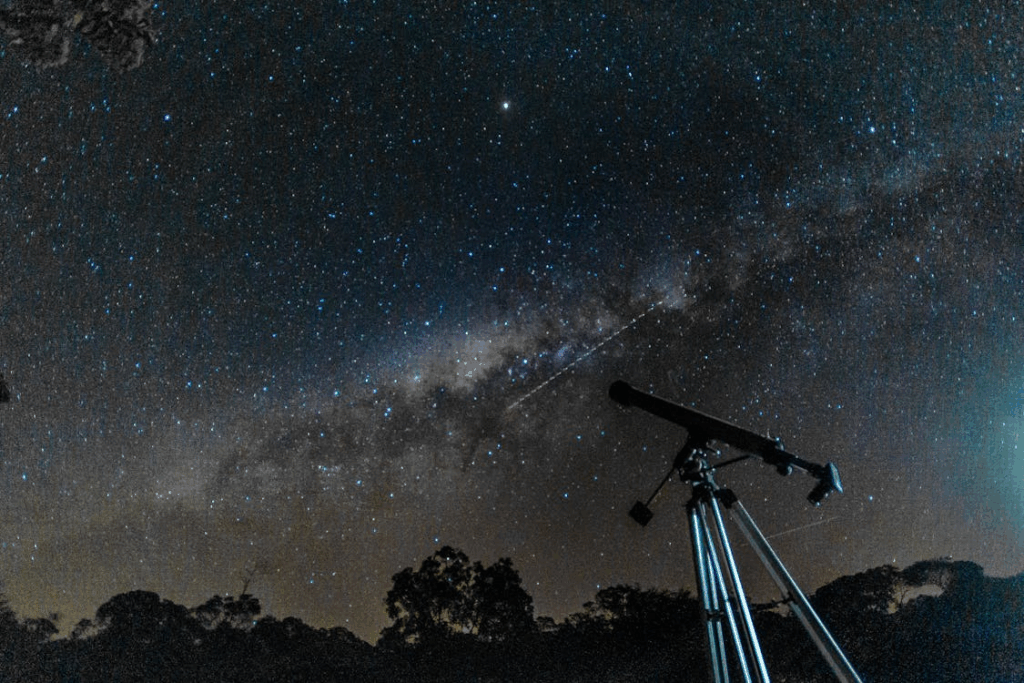Look up on a clear day, and you’ll see a brilliant blue sky stretching from horizon to horizon. But here’s the surprising truth: the sky isn’t really blue.
The color you perceive as the sky is an illusion created by sunlight interacting with Earth’s atmosphere. The phenomenon behind it is called Rayleigh scattering, and reveals just how much the world we see depends on physics, perception, and the quirks of human vision.
The Science of Scattered Light
Sunlight may appear white, but it’s actually a blend of all colors in the visible spectrum. When this light enters Earth’s atmosphere, it collides with gas molecules and tiny particles. Shorter wavelengths of light, blue and violet, scatter in all directions more efficiently than longer wavelengths like red and orange.
This process, known as Rayleigh scattering, was first described by British physicist Lord Rayleigh in the 19th century. Because blue light has a shorter wavelength and higher frequency, it bounces around the atmosphere far more than other colors. When you look up, you’re seeing scattered blue light coming from every direction, painting the sky in that familiar hue.
So, the sky isn’t filled with blue light. It’s filled with scattered white light, with blue simply being what your eyes detect most strongly.
Explore How Your Brain Fills In the Blanks When You See Optical Illusions for a deeper dive on perception.
Why the Sky Isn’t Violet
If violet light scatters even more efficiently than blue, why isn’t the sky purple? The answer lies in human biology. The cones in your retina, the color-sensitive cells, are less responsive to violet light and more to blue and green wavelengths. Additionally, much of the violet light is absorbed by the upper atmosphere before it reaches our eyes.
As a result, your brain interprets the sky as blue, even though it’s technically a mix of scattered violet and blue wavelengths. The color you see is as much about perception as physics.
See Why We Can See the Moon During the Day to unpack another everyday sky surprise
Why the Sky Changes Color
The sky’s color isn’t constant, it shifts throughout the day because the angle of sunlight changes. At sunrise and sunset, the sun’s light must travel through more atmosphere to reach your eyes. Along this longer path, most of the blue light is scattered out of view, allowing longer wavelengths, such as reds, oranges, and pinks, to dominate.
This is why sunsets appear fiery and warm: you’re seeing the remaining low-energy light that hasn’t been scattered away. Meanwhile, high noon produces the most vivid blue skies because sunlight passes through the least amount of atmosphere.
Cloudy or hazy conditions scatter light differently. Larger water droplets and dust particles cause Mie scattering, which affects all wavelengths equally, washing the sky into white or gray.
Beyond Earth: Different Planets, Different Skies
Rayleigh scattering happens everywhere light meets an atmosphere, but its effects vary by composition. Mars, with its thin atmosphere filled with iron-rich dust, displays butterscotch-colored skies during the day and blue-tinted sunsets. On Neptune, the dense methane atmosphere scatters blue light more intensely, giving the planet its signature azure glow.
If you stood on another world, the color of its sky would reveal clues about its gases, pressure, and distance from the sun. It’s essentially a visual fingerprint of its chemistry.
Read The Secret Life of Dust: Why You Can’t Escape It to learn how tiny particles can affect color perception.
The Illusion Above Us
What you perceive as a solid blue dome is, in reality, sunlight playing hide-and-seek with air molecules. The color of the sky is an optical illusion, and an ever-changing artwork painted by light, atmosphere, and human perception.
So, while the sky may not be truly blue, the illusion it creates is one of nature’s most elegant tricks. It serves as a daily reminder that beauty often lies in the science we can’t see.




